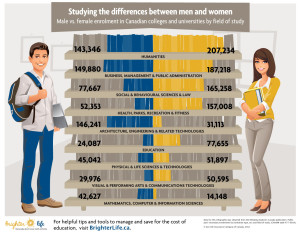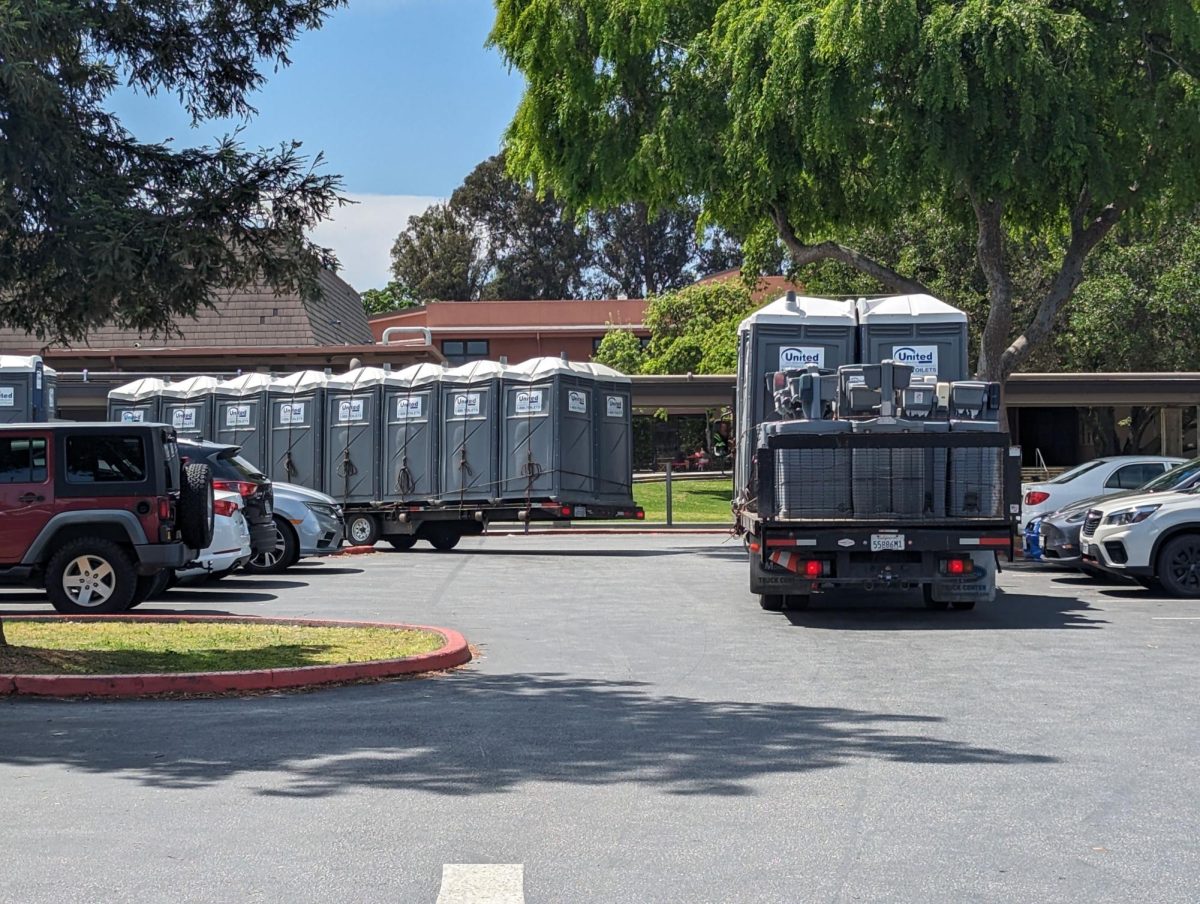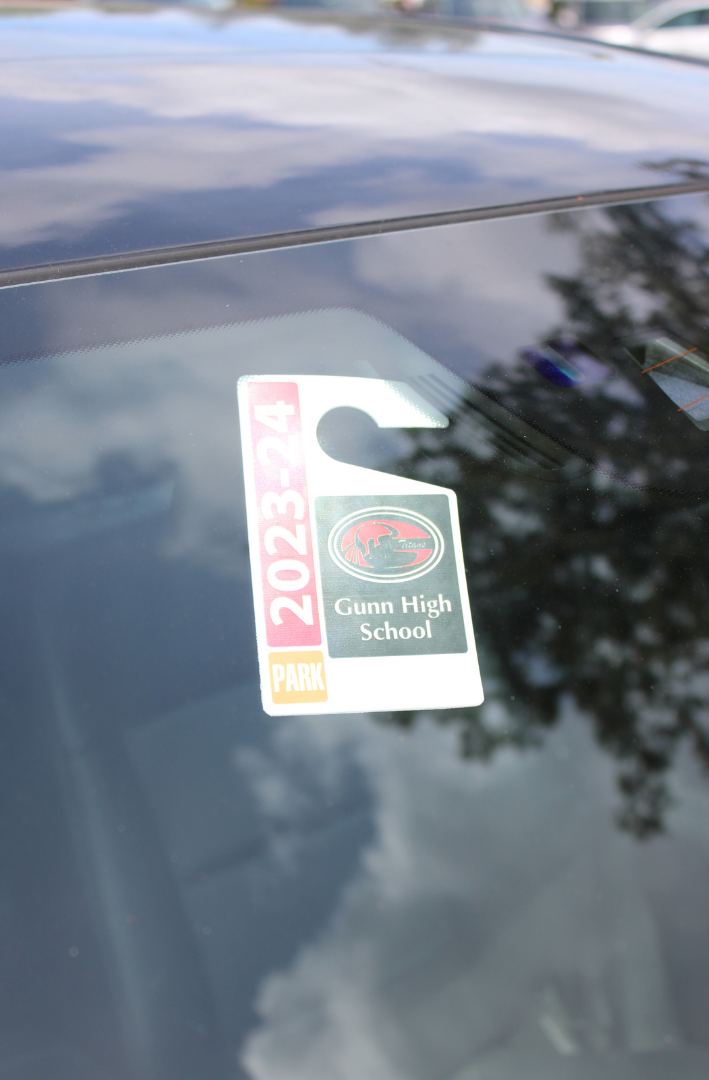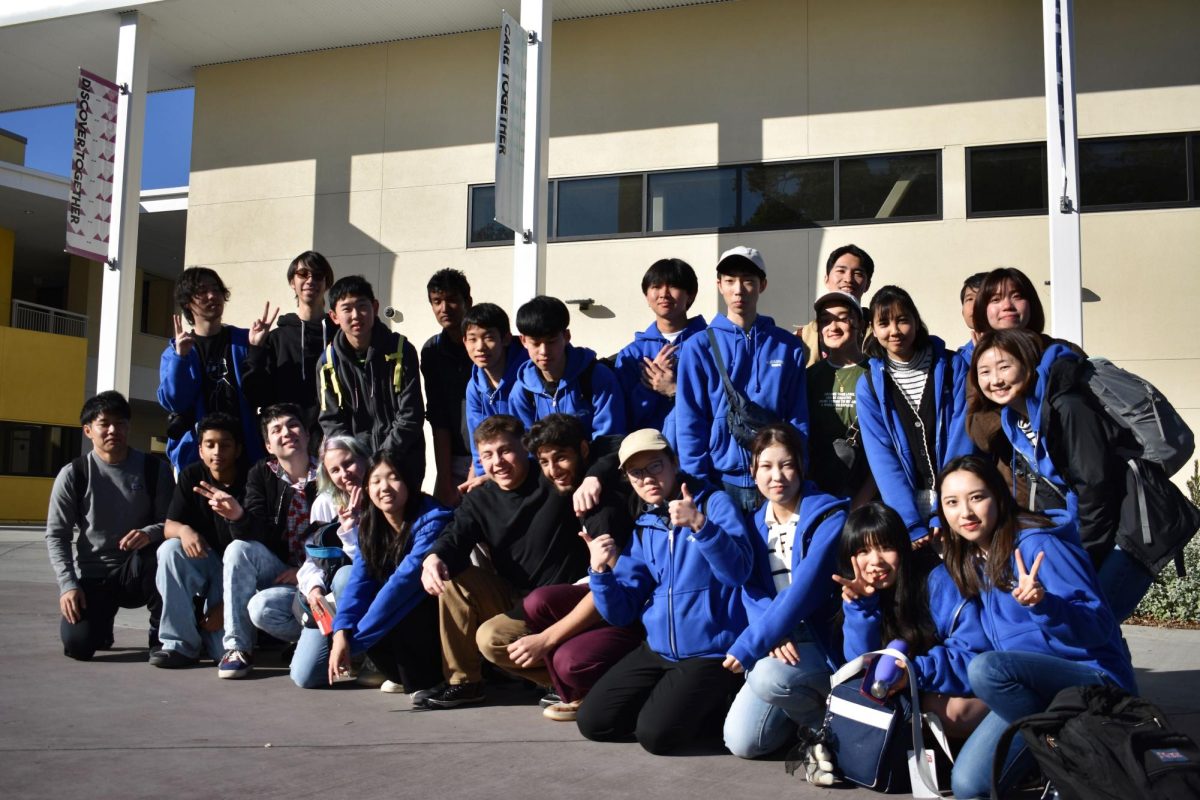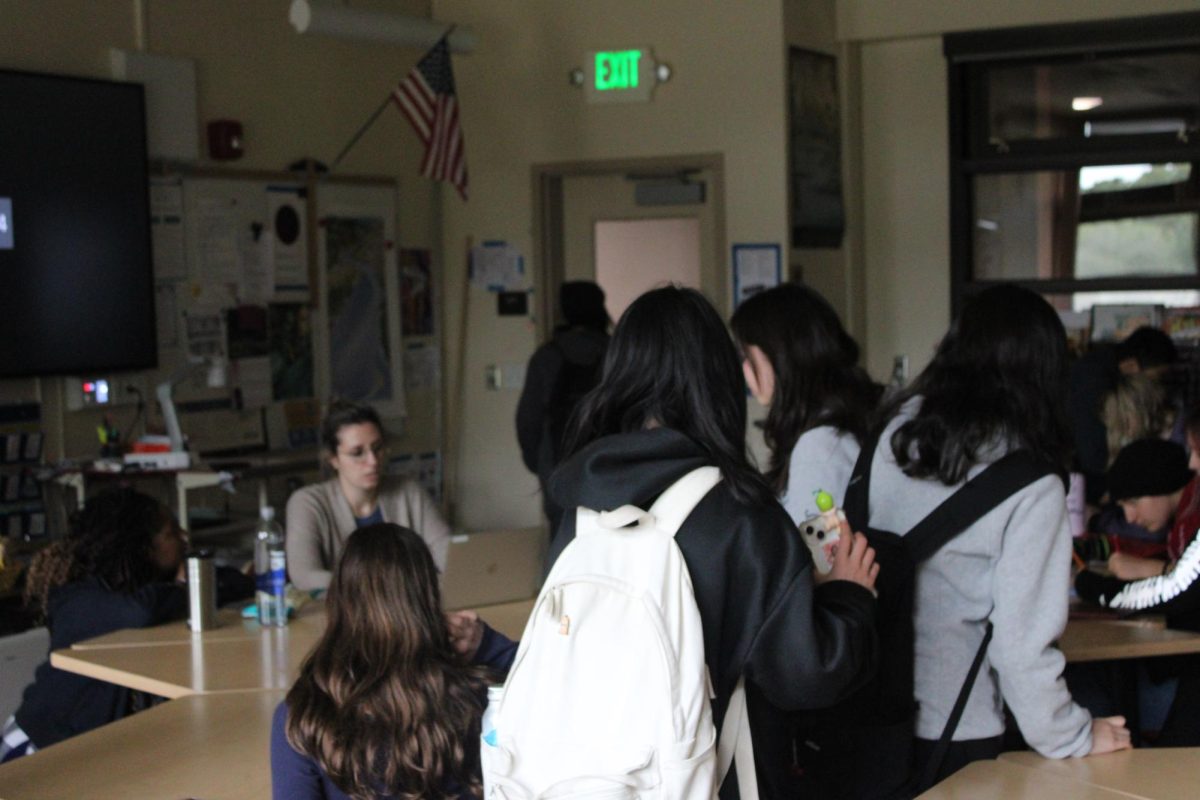By Rebecca Alger
Gunn students take honors and Advanced Placement (AP) courses to stand out in the college admissions pro- cess and get ahead on college credits. However, though the ratio of males to females in most AP courses at Gunn is evenly distributed, notable gender disparities exist in the student makeup of humanities and Science, Technology, Engineering and Mathematics (STEM) courses. Math While Math Instructional Supervisor Kathy Hawes is aware that there are far fewer females in the top math lane, particularly AP Calculus BC, she does not believe that the gender distribution is a problem. “We are really trying to encourage more girls to stick with math,” Hawes said. “But at the end of the day, if they’re not interested in it, if they’re not choosing to, with our recruitment efforts, they’re not successful, then it’s their choice.” Despite the male dominance in the higher level math courses at Gunn, female students are rarely aware of gender distribution. “None of us in class have really noticed the difference in numbers of males versus females,” senior Sandra Herchen said. Herchen agrees with Hawes that the lack of females in the top math lane at Gunn is not necessarily an issue that needs to be fixed. “I honestly don’t see the major problem with having fewer females in these classes as long as it is not because they are being forced into lower lanes,” Her- chen said. “People make their own decisions whether or not to continue in the higher lanes of math and science, and if they want to drop down, it doesn’t matter whether they are male or female.”
Junior Nieku Barkhordarian is also unsure as to why there are fewer females. “This pattern is surprising to me,” she said. “The class can be intimidating if you are com- pletely lost, and it really depends on how you personally deal with confusion.” Because students are placed in their respective math lanes even before they get to Gunn, math teacher Chris Karas believes that efforts to equalize the number of males and females in the top math lane should start prior to freshman year. “The bigger issue is can we get them here in a lane that’s going to get them into BC Calc,” Karas said. Hawes does not believe that the number of females in the top lane of math is a gender issue, but simply a choice made by students who wish to manage their time differently. “I think as students continue in the four years of Gunn, you have to start making choices. Where are you going to specialize? What is your interest? What is your passion?” Hawes said. Junior Leah Hirsh, followed a philosophy similar to Hawes’ when she decided to switch from Analysis Honors to Introduction to Analysis and Calculus (IAC) at the end of the first quarter this school year. “For me math has never been my passion,” Hirsh said. “By junior year, no matter how much work I put into it, my math grade continued to be low. I ended up spending so much time focusing on math that it hurt my grades in the classes that I actually were passionate about.”
While Hirsh primarily chose to switch lanes because of her own skill level and lack of pas- sion for the subject, the class environment was another deciding factor. “I think that for a lot of girls it’s not worth it to do math on such a high level,” she said. “The boys in the highest math lane treat these girls inferiorly and disre- spectfully and it is not worth it for these girls to continue to try to prove their intelligence.” English While STEM courses tend to have more males, the humanities, both nationally and at Gunn, tend to have more females. “I’d like to believe that males and females are encouraged equally in every field, but unfortunately our society hasn’t reached that point,” English Instructional Supervisor Eileen Feigenbaum said. Students could not pinpoint a reason for fewer males being enrolled in AP English. Despite the imbalance, however, no males have found being in a female oriented class as a problem. “Being the minority in English wasn’t really a bad thing,” senior Dillon Hu said. “There still are plenty of males in AP English, and for me, it was a perfect opportunity to m eet and talk to people I might have never talked to before.” Hu believes that the lack of males in AP English stems from students being encouraged to follow what society says instead of the courses they actually enjoy. “I think it’ll be better to just encourage people to take classes that they want, not what other people tell them to,” Hu said. “I think we’ll see more males who are really interested in English take English instead of Computer Science just because some of their teachers or friends suggested it and supported them.”
Computer Science The class with the smallest number of females is AP Computer Science—31.5 percent of students are female. Nationally however, only 15.9 percent of AP Computer Science test takers are female. According to AP Computer Science teacher Josh Paley, other teachers across the country are continually amazed by Gunn’s distribution. In response to their astonishment, Paley poses the question, “If this were any other discipline, would you be saying that?” Although there is only a four percent difference between the number of females in BC Calc and AP Computer Science, the number of females compared to males is more obvious. Girls who never noticed that there were fewer females in their math classes quickly pointed out the low number of females in AP Computer Science. “I remember scanning the room during computer science once and realizing that there seemed to be a majority of guys in my class,” senior Kelsey Chan said. “Almost all the girls were sitting on one side of the classroom, which made it pretty easy to tell the gender imbalance.” Both Paley and senior Amy Shen, who took AP Computer Science as a sophomore, noted that by getting a few more girls in the course each year, the number of girls taking the class will increase. “Some people sign up because their friends sign up and if none of your female friends sign up, then you’re less likely to,” Shen said. “People are more likely to take electives in which they already know other people.” Nurture vs. Nature According to the American Academy of Pediatrics, a child’s awareness of being a boy or a girl starts bef ore his or her first birthday. By the time they are four years old, children have stable gender identities for life. Despite Palo Alto’s accepting environment, the ideas about appropriate behavior based on sex are still a rampant part of today’s culture. “Palo Alto is a liberal area—everybody is very open minded, everybody wants their children to succeed, but with that said, somewhere we’re still injecting these beliefs about what’s appropriate based on sex to kids at a very young age,” Paley said. “It might be worse elsewhere, but it’s still not great here.”
The Program for International Student As- sessment tests 15-year-old students on their reading, mathematics and science literacy. In countries across the globe, including the highest scoring countries (Finland, South Ko- rea and Japan), girls either matched or out- performed boys in science and math. Hawes agrees with Paley in that the lack of females in STEM classes and careers is a purely a social issue. “I don’t believe that [the lack of females is a biological issue] because when you look at other cultures and countries, the balance is different,” Hawes said. “I think in general, we don’t put enough value on engineering and the hard sciences.” Not everyone agrees that the gender distri- bution in certain careers is purely a social issue. “Females are more ‘nurturing’ than males by nature, which might draw females to subjects like biology and fields like medicine instead of more technical fields like mechanical and electrical engineering,” Chan said. Career Choices Herchen understands that despite recent improvements, a lack of females in STEM fields continues. “As with college and the current work force, males naturally are more present in fields of engineering, science, and mathematics,” Herchen said. “Even though the numbers of females in each of these fields is steadily increasing, there definitely is still a stigma associated with women participating in engineering and science.” Chan, who is plans to go into biomedical engineering, believes that even though she will be working in a field with fewer females, her gender could conceivably help her. “There are a lot of scholarships and programs out there that focus on getting more females into technical fields, so it actually might work out in my favor.” 